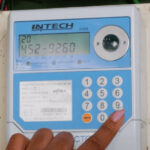Money Market Funds (MMFs) have become an increasingly popular investment vehicle in Kenya, offering a relatively safe way for investors to grow their money while maintaining liquidity. These funds are generally considered low-risk, making them an attractive option for individuals seeking to preserve capital while earning a modest return. However, like any investment, MMFs are not entirely free from risk. In this article, we delve into the safety of Money Market Funds in Kenya and explore the various risks associated with them.
Understanding Money Market Funds
Money Market Funds are a type of mutual fund that invests in short-term, high-quality debt instruments such as treasury bills, commercial paper, and certificates of deposit. The primary objective of these funds is to provide investors with a safe place to invest easily accessible cash equivalents while offering a higher return than a typical savings account.
In Kenya, MMFs are regulated by the Capital Markets Authority (CMA), which ensures that the funds adhere to specific guidelines aimed at protecting investors. Most MMFs in Kenya have a strong focus on capital preservation, making them appealing to risk-averse investors.
The Safety of Money Market Funds
Money Market Funds are generally considered one of the safest investment options available. Their safety is primarily due to the type of securities they invest in—high-quality, short-term debt instruments issued by reputable institutions or governments. The short-term nature of these investments reduces the risk of significant price fluctuations, while the high quality of the underlying assets minimizes the likelihood of default.
Moreover, MMFs in Kenya are managed by professional fund managers who are well-versed in the local financial markets. These managers are tasked with making investment decisions that align with the fund’s objective of capital preservation and liquidity. The funds are also subject to regular audits and oversight by the CMA, further enhancing their safety.
Liquidity Risk
One of the main advantages of Money Market Funds is their liquidity, which allows investors to access their money quickly, usually within a day or two. However, liquidity risk— the risk that an investor may not be able to withdraw their funds when needed—can arise, particularly during periods of financial instability.
In extreme market conditions, a sudden surge in withdrawals could force a fund to sell assets at unfavorable prices, potentially leading to losses. While this scenario is rare, it is a risk that investors should be aware of when considering MMFs.
Credit Risk
Credit risk refers to the possibility that the issuer of a debt instrument in the fund’s portfolio may default on its obligations, leading to losses for the fund. Although MMFs typically invest in high-quality, low-risk securities, there is still a small chance that an issuer could default.
In Kenya, the government and large financial institutions are generally seen as safe issuers, but corporate securities, especially those from smaller or less financially stable companies, carry a higher degree of credit risk. Investors should examine the composition of the MMF’s portfolio to understand the level of credit risk they are exposed to.
Interest Rate Risk
Interest rate risk is another factor that can affect the performance of Money Market Funds. This risk arises from changes in interest rates, which can impact the value of the securities held by the fund. For example, if interest rates rise, the value of existing fixed-rate securities may decrease, as newer issues offer higher returns.
In the context of Kenyan MMFs, interest rate risk is typically low because these funds invest in short-term instruments. However, in a rapidly changing interest rate environment, the returns on MMFs could fluctuate, potentially affecting the fund’s overall performance.
Inflation Risk
Inflation risk is the danger that the returns from an investment may not keep pace with inflation, leading to a decrease in purchasing power over time. While MMFs provide a higher return than traditional savings accounts, their returns are still relatively modest. In periods of high inflation, the real return on these funds may be negative, meaning that the value of the investment decreases in terms of purchasing power.
Investors in Kenyan MMFs should consider inflation risk, especially if they plan to invest over a longer period. Diversifying their investment portfolio to include assets that offer higher potential returns might be necessary to offset the effects of inflation.
Management Risk
Management risk refers to the potential for poor investment decisions by the fund manager, which could negatively impact the performance of the fund. In Kenya, MMFs are managed by licensed professionals, but this does not entirely eliminate the risk of human error or misjudgment.
Investors should research the fund manager’s track record, experience, and the fund’s historical performance before investing. This due diligence can help mitigate management risk by choosing funds with a strong reputation and consistent returns.
Regulatory Risk
Regulatory risk is the risk that changes in laws or regulations could negatively impact the fund’s operations or returns. In Kenya, the CMA oversees the regulation of MMFs, but regulatory changes could still pose risks.
For example, changes in tax laws, investment restrictions, or reporting requirements could affect the fund’s ability to achieve its objectives. While the regulatory environment in Kenya is relatively stable, investors should remain informed about potential changes that could impact their investments.
Market Risk
Market risk is the risk that the value of the investments in the MMF could decline due to broader economic or financial market conditions. While MMFs are less exposed to market risk than equity funds, they are not immune.
Events such as economic recessions, financial crises, or significant changes in government policy can affect the overall performance of financial markets, including the short-term debt instruments in which MMFs invest. Investors should consider the broader economic environment when assessing the safety of their MMF investments.
Diversification as a Risk Mitigation Strategy
One of the best ways to mitigate the risks associated with Money Market Funds is through diversification. By spreading investments across different asset classes, regions, and sectors, investors can reduce their exposure to any single risk.
In Kenya, investors can diversify their portfolios by investing in multiple MMFs, each with a different investment strategy or by complementing their MMF holdings with other types of investments, such as equities, bonds, or real estate.
Conclusion: Balancing Safety with Returns
Money Market Funds in Kenya offer a relatively safe investment option for those looking to preserve capital while earning modest returns. However, like any investment, they are not without risks. Understanding the various risks—liquidity, credit, interest rate, inflation, management, regulatory, and market risks—is essential for making informed investment decisions.
While MMFs provide a good balance of safety and returns, investors should carefully consider their financial goals, risk tolerance, and investment horizon before committing funds. By doing so, they can maximize the benefits of Money Market Funds while minimizing potential downsides, ensuring a well-rounded and resilient investment portfolio.





